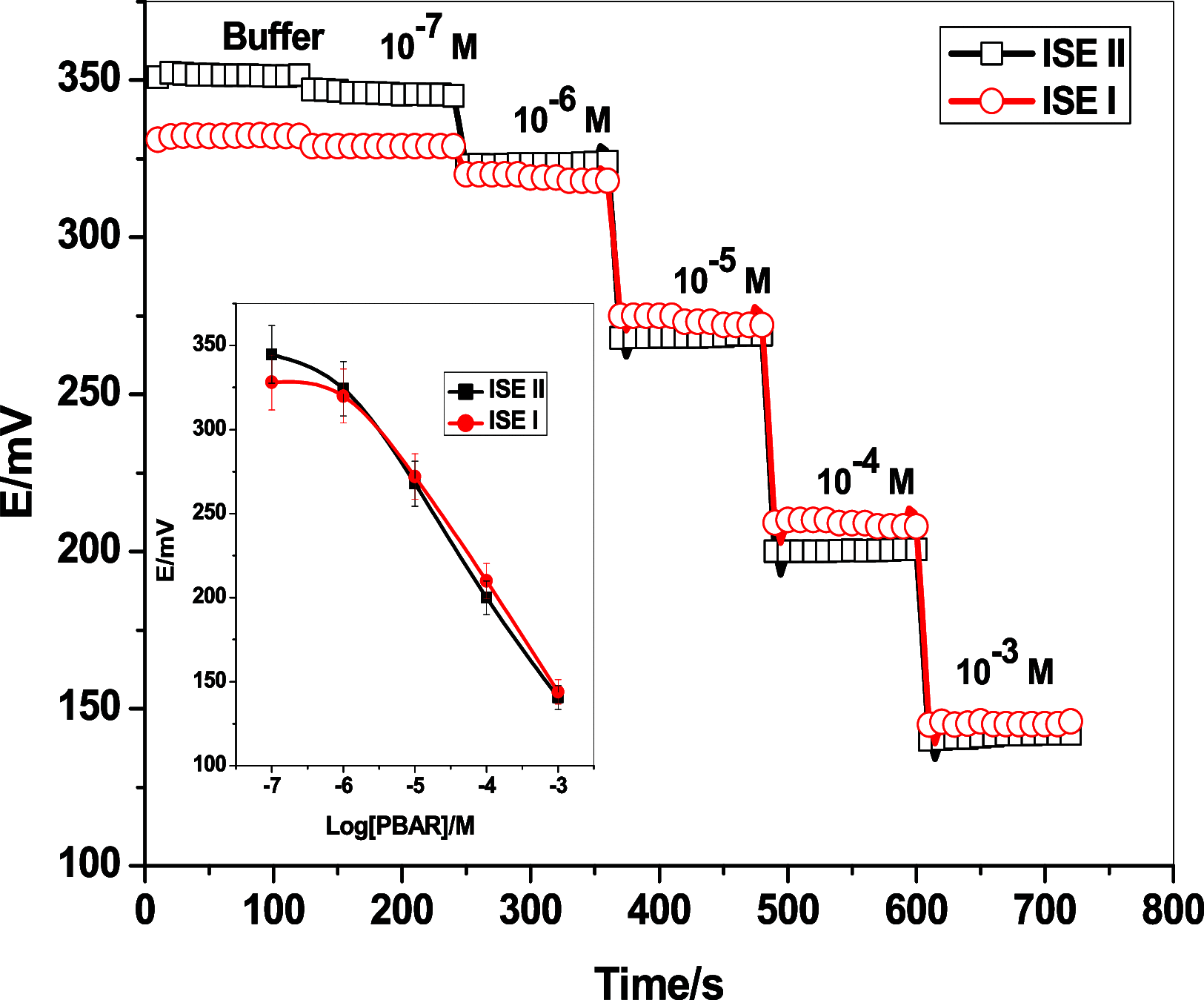Paper-Based Analytical Device Based on Potentiometric Transduction for Sensitive Determination of Phenobarbital
- PMID: 38027332
- PMCID: PMC10666222
- DOI: 10.1021/acsomega.3c03977
Paper-Based Analytical Device Based on Potentiometric Transduction for Sensitive Determination of Phenobarbital
Abstract
In medicine, barbiturates are a class of depressive medications used as hypnotics, anticonvulsants, and anxiolytics. For the treatment of specific forms of epilepsy and seizures in young children in underdeveloped countries, the World Health Organization recommends phenobarbital (PBAR), a barbiturate drug. This review describes the fabrication and characterization of a paper-based analytical apparatus for phenobarbital detection that is straightforward, affordable, portable, and disposable. All of the solid-state ion-selective electrodes (ISEs) for PBAR as well as a Ag/AgCl reference electrode were constructed and optimized on a nonconductive paper substrate. Using carbon nanotube ink, the sensors were made to function as an ion-to-electron transducer and to make the paper conductive. A suitable polymeric membrane is drop-cast onto the surface of the carbon ink orifice. The pyrido-tetrapeptide and pyrido-hexapeptide derivatives, which were recently synthesized, functioned as distinct ionophores in the PBAR-membrane sensor, enabling its detection. With a detection limit of 5.0 × 10-7 M, the manufactured analytical device demonstrated a Nernstian response to PBAR anions in 50 mM phosphate buffer, pH 8.5, over a linear range of 1.0 × 10-6 to 1.0 × 10-3 M. The PBAR-based sensors showed quick (less than 5 s) response times for PBAR ion detection. The modified separate solution method was utilized to evaluate the selectivity pattern of these novel ionophores with respect to PBAR ions in comparison to other common anions. The analytical instrument that was exhibited on paper had good precision both within and between days. The suggested technology assisted in the detection of trace amounts of PBAR in real pharmaceutical samples. A comparison was made between the data acquired using the HPLC reference method and the information obtained by the recommended potentiometric approach. The described paper-based analytical device may be a good choice for point-of-care PBAR determination because it is cheap and easy to find and can self-pump (especially when combined with potentiometric detection).
© 2023 The Authors. Published by American Chemical Society.
Conflict of interest statement
The authors declare no competing financial interest.
Figures





References
-
- Choi D. W.; Ye K. N.; Kim J. T.; An S. H. Phenobarbital dosing and therapeutic drug monitoring in the neonatal intensive care unit. Yakhak Hoeji 2018, 62, 49–53. 10.17480/psk.2018.62.1.49. - DOI
LinkOut - more resources
Full Text Sources
Miscellaneous

